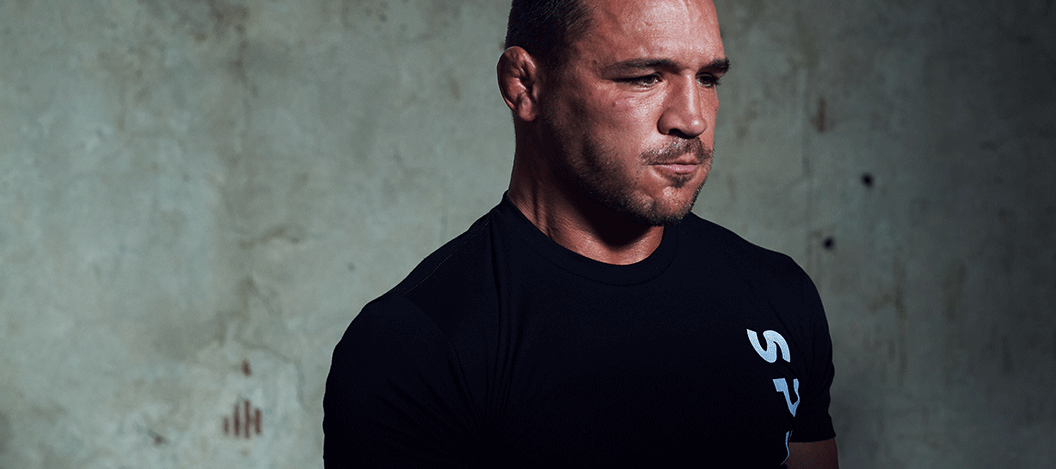Pound For Pound Strong: How Speede Help Develops Relative Strength
Don’t blink. Just like that, Speede Pro Athlete Michael Chandler sent Tony Ferguson crashing to the canvas in an instant at UFC 274. In a battle of two of the top lightweights in the world, Chandler’s cocktail of explosiveness, athleticism, lightning fast reflexes, and all-world skill manifested into a brutal front kick knockout victory.
While anyone can appreciate a good knockout or sleek submission, those of us who watch sports through the lens of performance see things differently. Almost like how taking a film class results in seeing movies differently, we see athletic events and break down what goes into a performance like that.
In this case, we’re talking relative strength.

What Is Relative Strength?
Picture a horse racing jockey or extreme sports athlete such as a surfer for a moment. These are sports that require a high degree of coordination, motor control, and physical fitness—I don’t think anyone would deny that. However, they also have another constraint working against them: they can’t get too big relative to their sports’ demands.
The same rings true for a number of sports—MMA, wrestling, boxing, rowing, skateboarding, racing, track & field, basketball and more. These are sports that require athletes to be strong without being too big, otherwise they could be disqualified and/or their performance could suffer.
In combat sports for example, these are weight-class-based sports. While you and I may want to add some nice hypertrophy (lean muscle growth) for aesthetics, these athletes cannot afford an extra pound of “useless bulk,” be it from non-”functional” muscle mass, fat, and/or inflammation in the form of excess water retention.
Sports like basketball or track & field are a less extreme example. Sure, there’s no weight class in these sports, but as Paul Fabritz of PJF Performance likes to say, “fat don’t fly.” Mass built in excess of what’s required to meet sporting demands may result in faulty movement mechanics, decreased verticality, diminished agility, and additional weight taxing the joints.
Strength Is Neurological
Let’s not forget that strength is a neurological quality. While training for strength means we will get a certain amount of “functional” hypertrophy accrued, this is merely a byproduct of training and not the end goal.
Being able to innervate (activate) muscle fibers we want to use, motor unit recruitment, and overall neuromuscular/neuromyofascial dialogue improvement is what we should be chasing when training athletes.
But how do we accomplish this?
How Speede Helps Develop Pound For Pound Strength
The beauty of Speede is that it’s a swiss army knife for strength development. Whether you’re an athlete, aging adult, or simply someone who wants to improve fitness, there’s a solution for you.
While your everyday person may spend more time in isokinetic mode or eccentric mode to develop as much lean body mass as we can relative to our body fat, the ratio is going to be different for an athlete.
As we’ve covered here, athletes need to develop the function of strength—not the aesthetics of a bodybuilder (even if there’s definitely an overlap between performing at a high level and looking good).
This is why Speede offers multiple modes that are even more performance-driven.
With concentric-only mode, athletes can drive more motor unit recruitment and train being able to move with max intent while avoiding heavy eccentrics which are highly effective for building muscle mass. We may need a certain amount of that in any sport but a lineman, for example, isn’t going to have the strength to weight ratio constraints that a fighter or basketball player may have.
With isometric mode, we’re able to strengthen our joints at key angles for injury prevention while also promoting similar motor unit recruitment, and movement pattern cuing.
With isotonic mode, we’re able to perform all kinds of dynamic exercises at max velocity to support the type of speed and explosive strength needed for performance (or low load, high velocity movements as it’s known in the strength world).
Bottom Line
Gary Marinovich of the legendary Marinovich family (his brother Marv was one of the godfathers of contemporary strength & conditioning) once said, “your performance should dictate your weight and not the other way around,” and he was right.
While some sports and positions do require size, a lot of sports require high levels of strength relative to body size.
The beauty of Speede is that it can help you net lean muscle mass if that’s what you need and/or help develop other relative strength qualities for other goals.
Whether your goal is health, fitness, performance, rehab, or longevity, Speede has something for every body.



